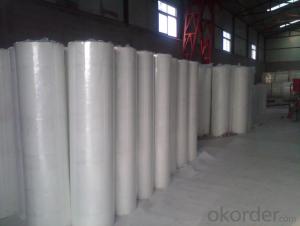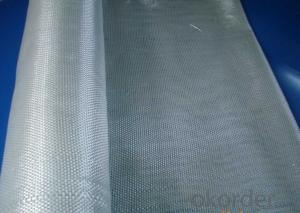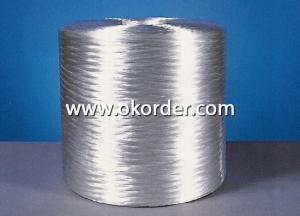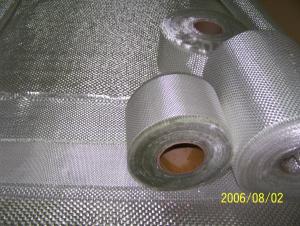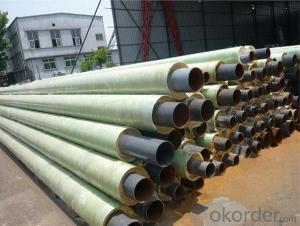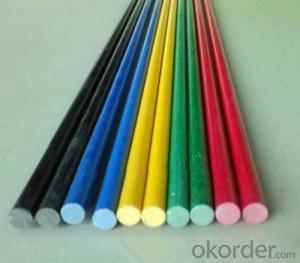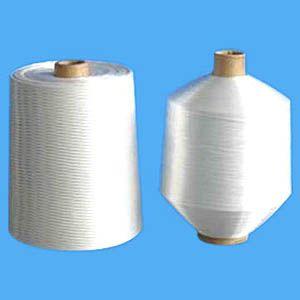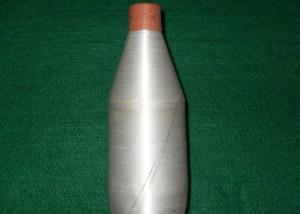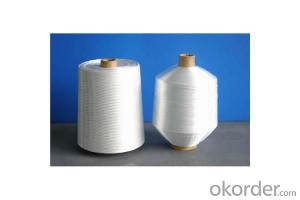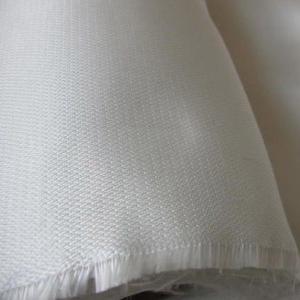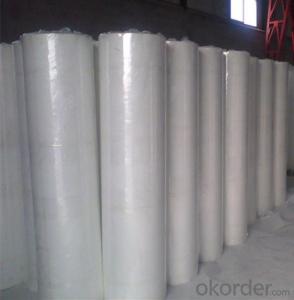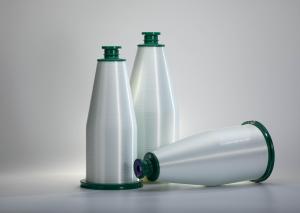Fiberglass Fabric for Pipeline Ductile Conjunction
- Loading Port:
- Shanghai
- Payment Terms:
- TT OR LC
- Min Order Qty:
- 500 m²
- Supply Capability:
- 50000 m²/month
OKorder Service Pledge
OKorder Financial Service
You Might Also Like
Fiberglass Fabric for Pipeline Ductile Conjunction
Fiberglass Fabric Introduction:
Fiberglass fabric is weaved by high quality fiberglass,as a kind of engineering material,which is
many excellent characteristics:
flame-resisting,corrosion resistant,high strength,heat resistance.stable structure,good chemical resistance,durability.
Fiberglass Fabric Features:
Warp and weft yarns are parallel arrangement as flat situation, with uniform tension;
Fiber is aligned with large consistency, stable and easy operation;
Good moldability, fast and complete wet out in resins, resulting in high productivity;
Good transparency and high strength of composite products.
Fiberglass Fabric Specification:
mark | Fiber consistency(ends/ cm) |
Area weight (g/ m2) |
Thick-ness (mm) |
Width (cm) |
Length (mm) | Breaking strength(N)≥ |
weave | |||
Warp direction | Weft direction | Warp direction | Weft direction | |||||||
EW200 | 16 | 12 | 200±20 | 0.2 | 90-130 | 300-1200 | 980 | 980 | ||
EW210 | 16 | 12 | 200±20 | 0.21 | 90-130 | 300-1200 | 1080 | 1080 | Twill weave | |
Plain weave | ||||||||||
EWR360 | 3.2 | 1.8 | 354±18 | 0.35 | 50-300 | 100 | 2000 | 2000 | ||
EW280 | 16 | 10 | 280±28 | 0.26 | 90-130 | 300-1200 | 1800 | 1800 | ||
EW300 | 14 | 10 | 320±32 | 0.3 | 90-130 | 300-1200 | 1500 | 1500 | ||
EW430 | 20 | 12 | 420±42 | 0.43 | 90-130 | 300-1200 | 2000 | 2000 | Broken twill | |
EWR136 | 10 | 10 | 136±13 | 0.136 | 100 | 200 | 850 | 850 |
Plain weave | |
EWR200 | 8 | 7 | 200±20 | 0.21 | 100 | 200 | 1200 | 1200 | ||
EWR400 | 3.6 | 3.2 | 400±30 | 0.4 | 100 | 50-100 | 2500 | 2500 | ||
EWR600 | 2.6 | 2.5 | 600±50 | 0.6 | 100 | 40KG | 4000 | 4000 | ||
EWR580 | 2.5 | 2.3 | 576±29 | 0.58 | 100 | 40KG | 3850 | 3850 | ||
EWR800 | 1.8 | 1.8 | 800±60 | 0.8 | 100 | 40KG | 4600 | 4600 | ||
Product Show
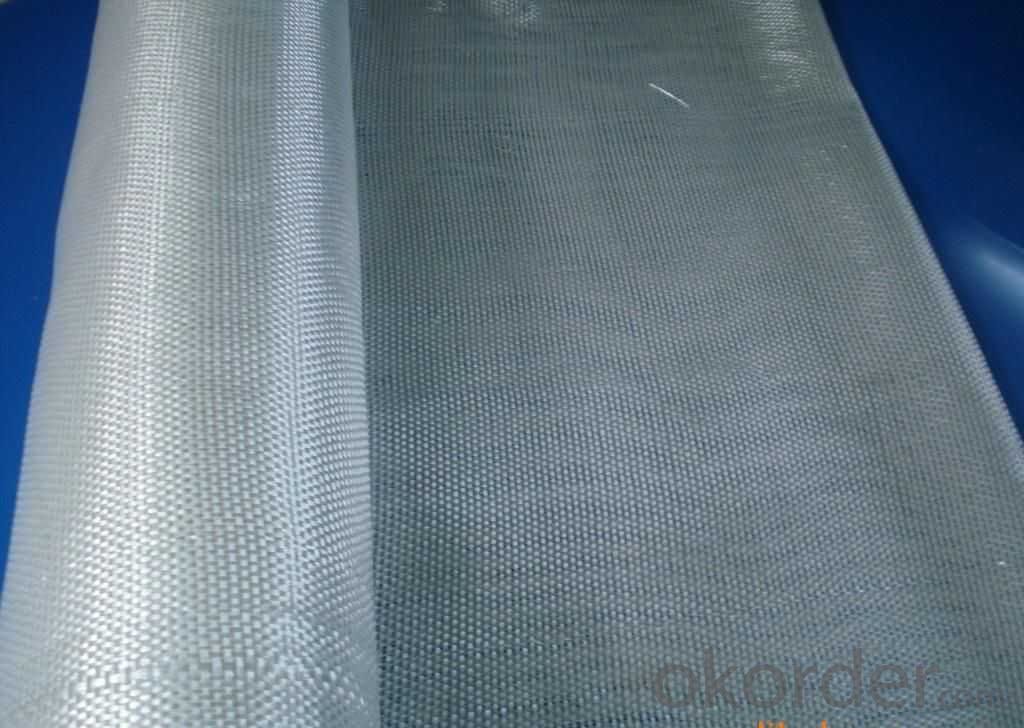
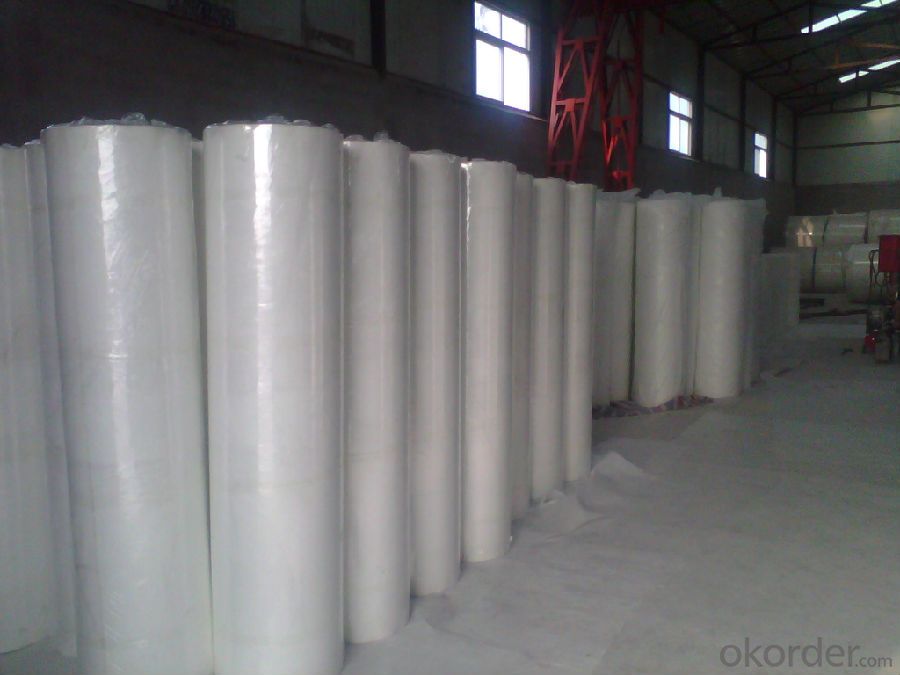
Fiberglass Fabric Usage:
E-glass woven roving is a schistose double faces reinforcement fabric that is weaved into from roving in directly.
E-glass fiber fabric (thin fabrics with thickness from 0.025 to 0.09mm) is suitable for electrical isolation mica product, wax cloth as the reinforcement materials.
E-glass woven roving applys to all kinds of polyester reinforcement system, (such as unsaturated polyester resin, vinylite,epoxy resin and phenolic resin.
E-glass woven roving is a high performance reinforcement material. It is widely used in hand lay-up and machinery processing products, (such as vessel, container, airplane and vehicle component, furniture, athletic facilities and other industry.
FAQ
1.Package of Fiberglass Fabric?
Fiberglass fabric is wound on a paper tube with inner diameters of 50. 8, 76 or 152mm. Each roll is wrapped in a plastic bag, then to be packed in a carton box. The rolls are to be horizontally placed.
Width (cm): 90, 100, 127
Length (m): 100, 200, 300, 400
2.Storage of Fiberglass Fabric?
Store rolls in a cool, dry location
Protect rolls from weather and other damage.
3.If sample available if needed?
We aim to offer our customer best Products&Service,samples are allowed if necessary.
- Q:How does the resistance to impact of fiberglass yarn compare to other materials?
- When compared to many other materials, fiberglass yarn exhibits excellent impact resistance. Its exceptional strength and durability stem from its unique composition, which consists of fine glass fibers. These glass fibers in fiberglass yarn possess remarkable tensile strength, allowing them to withstand significant force without breaking or deforming. This impact resistance makes fiberglass yarn an ideal choice for various applications, especially in industries such as construction, where reinforcement of concrete is necessary. Additionally, fiberglass yarn finds use in the manufacturing of sports equipment, automotive parts, and aerospace components. In contrast to materials like cotton, polyester, or nylon, fiberglass yarn offers significantly higher impact resistance, ensuring that products made from it can endure heavy loads and harsh conditions while maintaining their structural integrity.
- Q:Is fiberglass yarn resistant to extreme weather conditions?
- Indeed, extreme weather conditions are generally resisted by fiberglass yarn. Fiberglass, an enduring and weather-resistant substance, is capable of enduring a vast array of weather conditions, encompassing heat, cold, rainfall, and UV radiation. It is renowned for its exceptional thermal and chemical durability, as well as its capacity to sustain its strength and integrity in challenging surroundings. Fiberglass yarn often finds utility in outdoor domains, including the construction, marine, and automotive industries, wherein it confronts extreme weather conditions. Nonetheless, it is crucial to acknowledge that the degree of resistance can fluctuate contingent upon the specific composition and manufacturing procedure of the fiberglass yarn.
- Q:Can fiberglass yarn be used in insulation blankets?
- Yes, fiberglass yarn can be used in insulation blankets. It is commonly used as a base material in insulation blankets due to its excellent thermal resistance and insulating properties.
- Q:Is fiberglass yarn suitable for use in chemical processing equipment?
- Yes, fiberglass yarn is suitable for use in chemical processing equipment. It is highly resistant to chemicals, corrosion, and high temperatures, making it an ideal choice for various applications in chemical processing industries.
- Q:Is fiberglass yarn suitable for use in aerospace composites?
- Yes, fiberglass yarn is suitable for use in aerospace composites. Fiberglass is a commonly used material in the aerospace industry due to its high strength-to-weight ratio, corrosion resistance, and excellent thermal insulation properties. Fiberglass yarn can be woven into fabric or used as reinforcement material in composite structures, providing strength and stiffness to the aerospace components. It is also known for its excellent electrical insulation properties, making it suitable for applications in electrical systems and wiring harnesses. Additionally, fiberglass composites are relatively cost-effective compared to other materials like carbon fiber, making them a popular choice in the aerospace industry. Overall, fiberglass yarn is a suitable material for use in aerospace composites, meeting the demanding requirements of strength, weight, and performance in aerospace applications.
- Q:Can fiberglass yarn be used for making bedding?
- While it is possible to utilize fiberglass yarn in the production of bedding, it is not a prevalent or recommended choice for this particular purpose. Despite its reputation for being sturdy, long-lasting, and resistant to both heat and chemicals, fiberglass yarn possesses certain drawbacks that make it less suitable. For instance, it is a brittle material that can easily break, thereby posing potential health risks if the fibers become airborne and are either inhaled or come into contact with the skin. Moreover, fiberglass yarn fails to provide the same level of comfort as natural fibers such as cotton or synthetic materials like polyester, which are commonly utilized in bedding. Consequently, it is generally advised to avoid the use of fiberglass yarn in the creation of bedding and instead opt for safer and more comfortable alternatives.
- Q:Can fiberglass yarn be used for making furniture?
- Yes, fiberglass yarn can be used for making furniture. Fiberglass yarn is known for its strength, durability, and resistance to wear and tear, making it an excellent choice for furniture manufacturing. It can be woven or used as a core material in upholstery and padding, providing structural support and enhancing the longevity of furniture. Additionally, fiberglass yarn can be combined with other materials such as resin or foam to create unique and innovative designs. Its versatility and ability to withstand heavy use make it a popular choice for furniture makers.
- Q:How does the diameter of fiberglass yarn affect its flexibility?
- The diameter of fiberglass yarn directly impacts its flexibility. Generally, a thinner diameter of fiberglass yarn results in increased flexibility, while a thicker diameter reduces flexibility. This is because the thinner yarn allows for more movement and bending, making it more flexible. On the other hand, thicker yarn is more rigid and less likely to bend or flex easily. Therefore, the diameter of fiberglass yarn is a crucial factor in determining its flexibility.
- Q:Can fiberglass yarn be used for making tablecloths?
- Yes, fiberglass yarn can be used for making tablecloths. Fiberglass yarn is known for its durability, strength, and resistance to heat and chemicals. These properties make it suitable for use in tablecloths, as it can withstand spills, stains, and high temperatures. Additionally, fiberglass tablecloths are often used in outdoor settings or high-traffic areas where traditional fabric tablecloths may not be able to withstand the wear and tear. However, it is important to note that fiberglass yarn can be rough to the touch and may not provide the same softness and comfort as other fabric options.
- Q:How does fiberglass yarn perform in terms of acoustic insulation?
- Acoustic insulation is greatly enhanced by the exceptional performance of fiberglass yarn. This material's unique composition and structure make it an ideal choice for improving acoustic performance and reducing sound transmission in different applications. The fine fibers of fiberglass yarn effectively trap and absorb sound waves, converting them into heat energy. This absorption ability is highly effective in reducing noise levels and preventing sound from passing through walls, floors, and ceilings. To meet specific acoustic requirements, the density and thickness of fiberglass yarn can be customized, allowing for effective soundproofing in various environments. Moreover, fiberglass yarn is highly durable and resistant to moisture, making it suitable for use in areas with high humidity or exposure to moisture. Additionally, fiberglass yarn is a versatile material that finds application in different acoustic insulation products, including acoustic panels, soundproofing curtains, and insulation batts. Its lightweight nature and easy handling make it a convenient choice for installation in both residential and commercial settings. To summarize, fiberglass yarn excels in acoustic insulation. Its sound absorption ability, durability, versatility, and customizable options make it an outstanding choice for enhancing acoustic performance and reducing noise levels in a wide range of applications.
1. Manufacturer Overview |
|
|---|---|
| Location | |
| Year Established | |
| Annual Output Value | |
| Main Markets | |
| Company Certifications | |
2. Manufacturer Certificates |
|
|---|---|
| a) Certification Name | |
| Range | |
| Reference | |
| Validity Period | |
3. Manufacturer Capability |
|
|---|---|
| a)Trade Capacity | |
| Nearest Port | |
| Export Percentage | |
| No.of Employees in Trade Department | |
| Language Spoken: | |
| b)Factory Information | |
| Factory Size: | |
| No. of Production Lines | |
| Contract Manufacturing | |
| Product Price Range | |
Send your message to us
Fiberglass Fabric for Pipeline Ductile Conjunction
- Loading Port:
- Shanghai
- Payment Terms:
- TT OR LC
- Min Order Qty:
- 500 m²
- Supply Capability:
- 50000 m²/month
OKorder Service Pledge
OKorder Financial Service
Similar products
New products
Hot products
